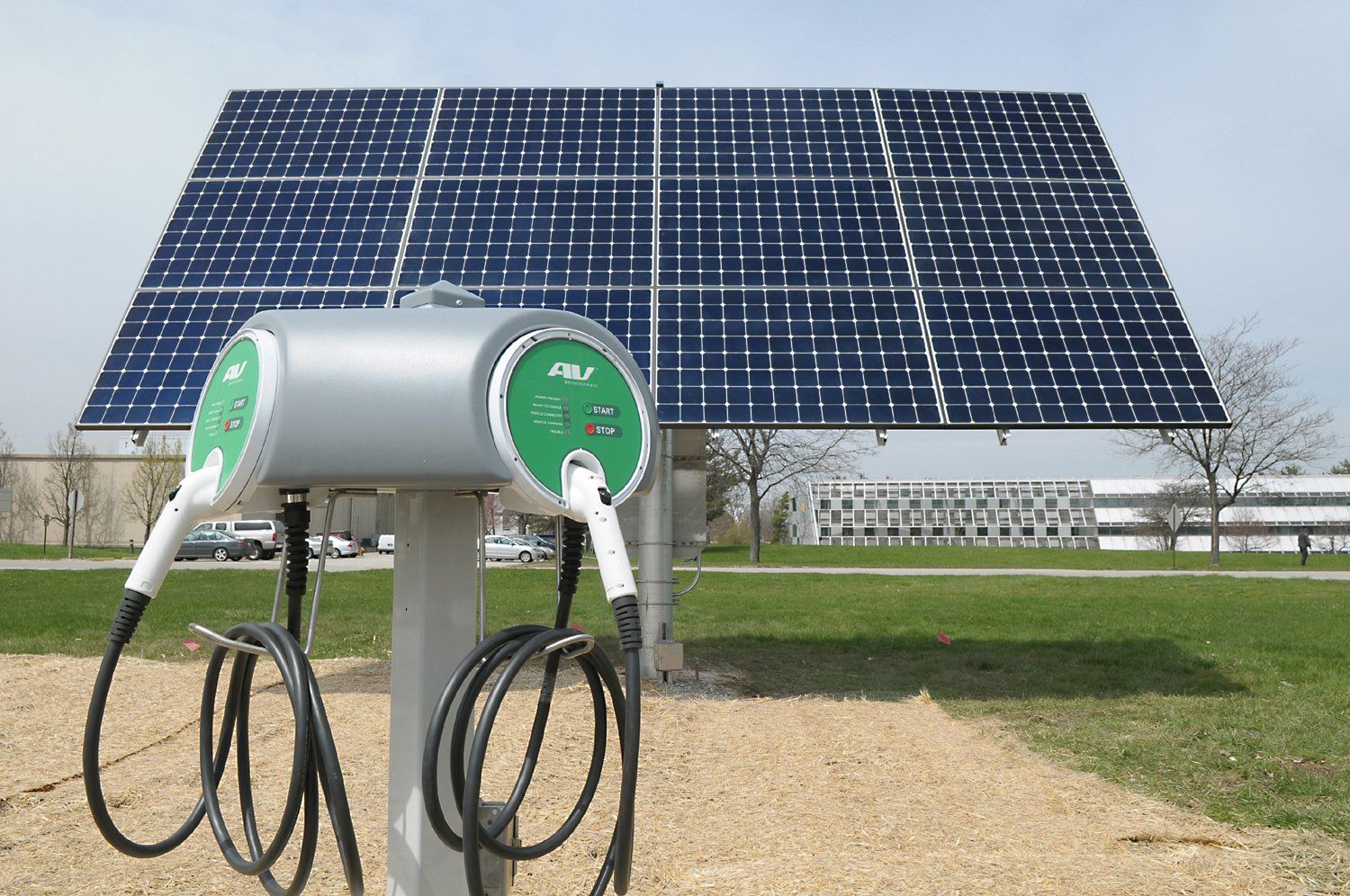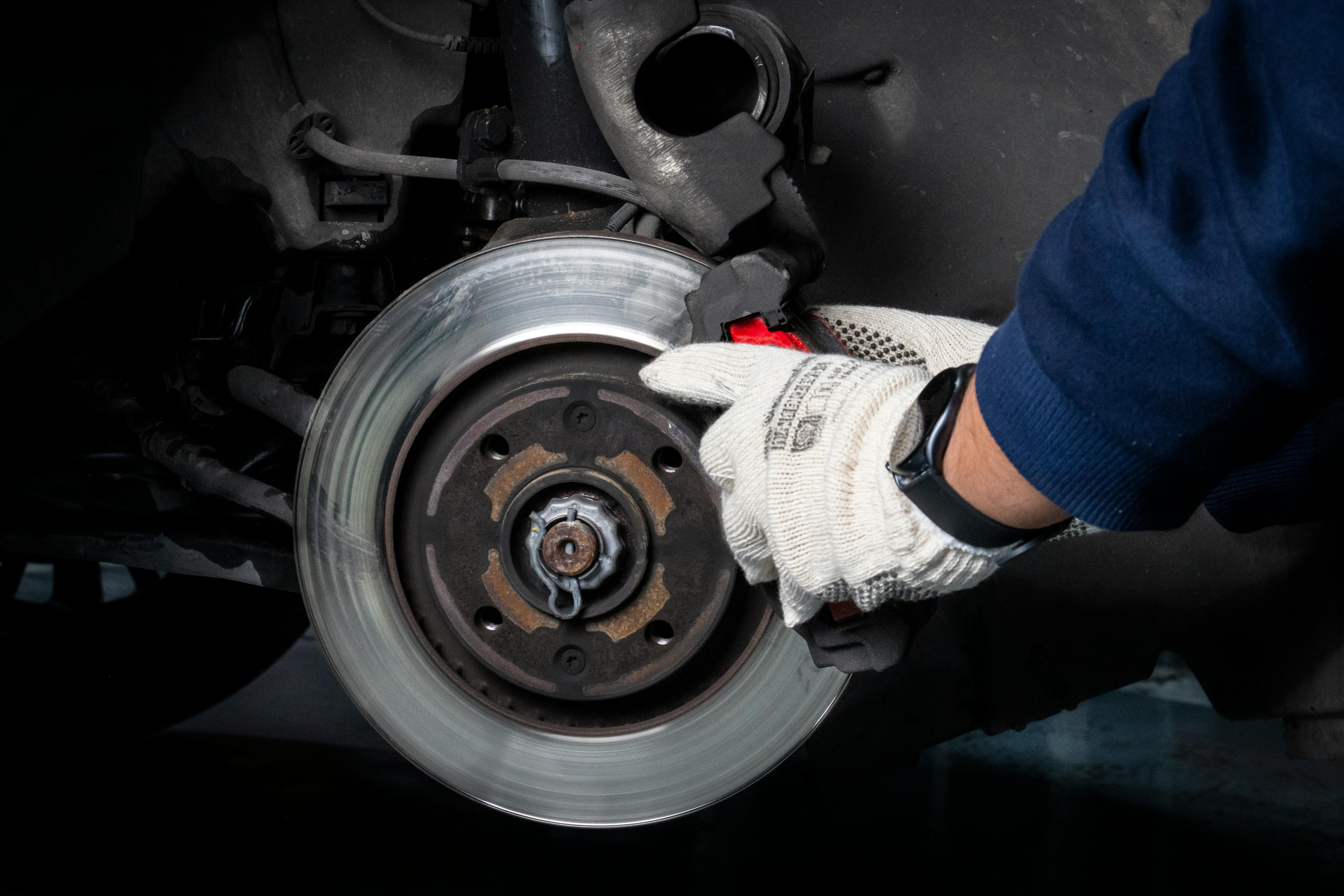
Every car needs a fully functional braking system to avoid problems while you are driving. As your car’s main defense mechanism, brakes are critical for safe driving. They control the car’s speed and ensure smooth navigation. Most importantly, they make your vehicle stop at crucial moments, protecting you and others on the road.
However, brake problems can often lurk beneath the surface, presenting themselves through subtle or, at times, alarming warning signs. Ignoring these indicators can escalate minor issues into significant safety hazards, leading to costly repairs or, in the worst-case scenario, catastrophic incidents. Understanding these potential problems, and knowing how to identify them, is the first step toward proactive vehicle maintenance and ensuring your safety on every journey.
This in-depth guide is designed to empower you with the knowledge needed to recognize the critical signals your car’s braking system might be sending. We will explore common brake issues, detailing their symptoms, underlying causes, and the importance of prompt attention. By focusing on practical, actionable insights, we aim to help you make informed decisions, ensuring your vehicle remains a reliable and safe mode of transport.
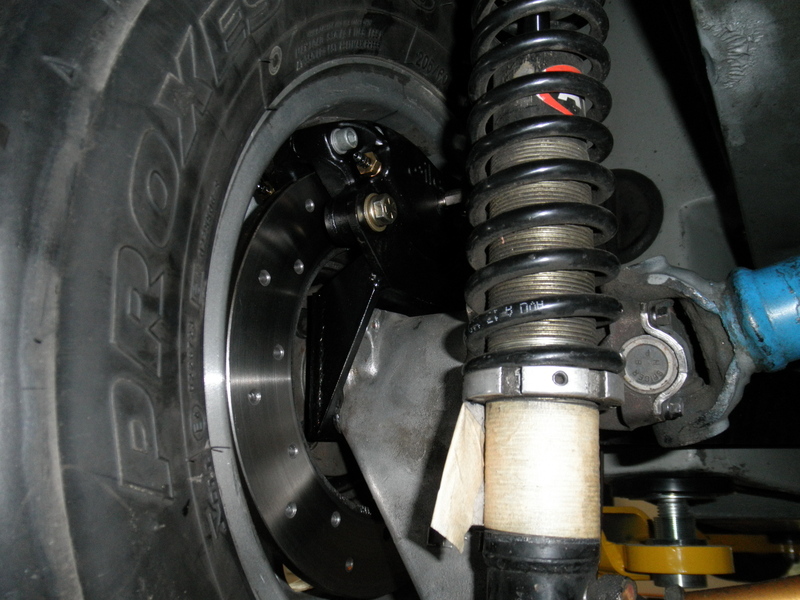
1. **Squealing or Squeaking Brakes**
Is there an unusually high-pitched squeak or squeal when you press down on your car’s brakes? This distinct sound is one of the most common early warnings that your brake pads are wearing thin. It’s not just an annoying noise; it’s a deliberately designed signal intended to alert you to an impending maintenance need.
Most brake pads are engineered with a small metal piece, aptly named a wear indicator. As the brake pad material gradually diminishes through use, this small metal component eventually begins to make contact with your vehicle’s brake rotor. The resulting friction produces that familiar, high-pitched squeaky noise, serving as an effective early warning system to indicate that it’s time to get your brake pads thoroughly checked by a professional.
While the wear indicator is the most frequent culprit, other factors can also contribute to squealing brakes. Sometimes, new pads might squeal briefly as they bed in, or a bit of dirt, dust, or moisture could have temporarily found its way into the brake mechanism, causing transient noise. Poor quality or incorrectly installed brake pads, broken springs within the caliper assembly, or non-concentric brakes can also be sources of unusual sounds.
Additionally, the presence of a thin backing plate on new pads helps to reduce rattling and squealing. If these plates are not installed, or if an anti-squeal paste isn’t applied to the backside of the brake pads, noise can occur. A few hard applications of the brake system from a higher speed can sometimes reduce glazing on the brake pads, which can also contribute to a high-pitched squeal or howl.
Your brakes shouldn’t produce any significant noise when they are applied, but when they start talking, it is imperative that you listen. Addressing a squealing or squeaking sound promptly can prevent further damage to your braking system and ensure that your vehicle’s main defense mechanism remains fully functional and reliable, keeping you safe on the road.
Read more about: 13 Essential Red Flags: Your Step-by-Step Guide to Inspecting a Used Performance Car Like a Pro
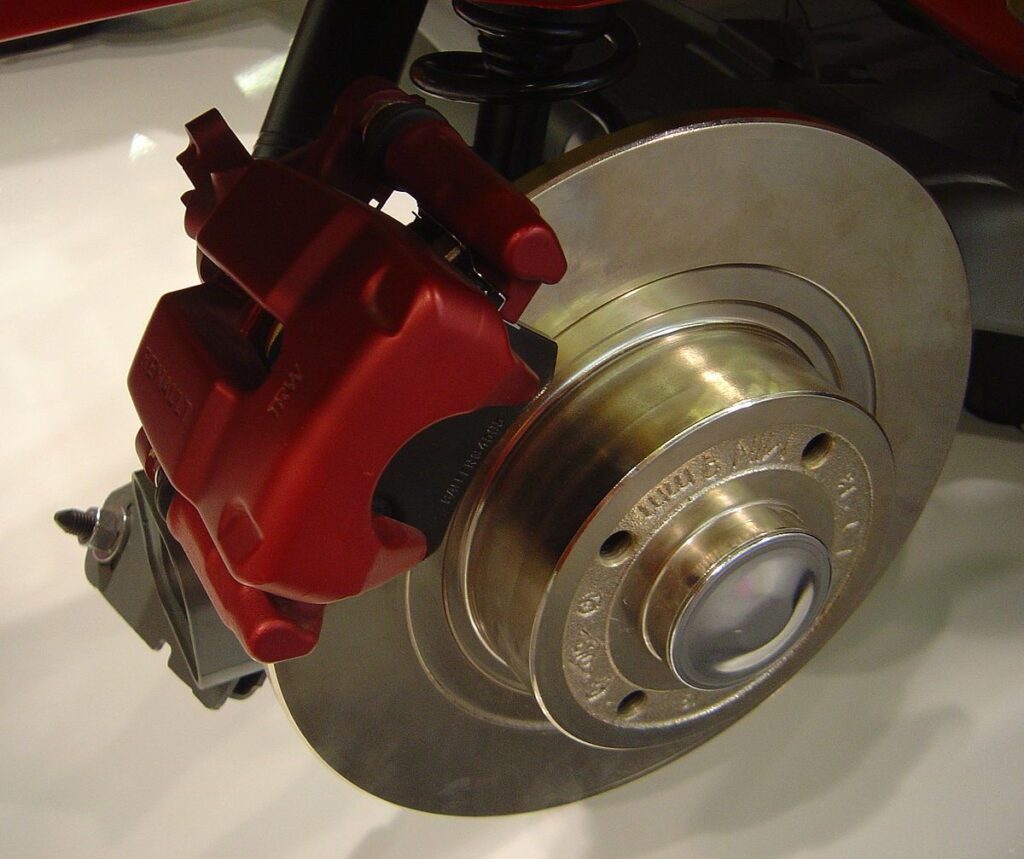
2. **Grinding Noises from Brakes**
In stark contrast to a high-pitched squeal, a loud, harsh grinding sound emanating from your brakes is a much more serious and immediate cause for concern. This isn’t just an early warning; it’s typically a sign that your brake pads are severely worn down, and the situation demands urgent attention. Such a noise should never be ignored the first time you hear it, as it indicates a critical problem.
When you hear this grinding, it often signifies that the friction material on your brake pads has completely eroded. This results in the metal backing of the pads directly rubbing against the metal brake rotors. This metal-on-metal contact not only creates that alarming grinding noise but also causes significant damage to both the rotors and the pads, drastically reducing your vehicle’s braking performance.
In extreme cases, this metal-on-metal contact can lead to rapid deterioration of the rotors, potentially warping them or creating deep grooves that compromise their effectiveness. Every time you use the brakes under these conditions, the two metal parts are frictioning together, exacerbating the damage and making it increasingly difficult for your car to stop safely. This can quickly turn a manageable repair into a much more extensive and expensive overhaul of your braking system.
While less common, a grinding noise can sometimes also suggest that a foreign object, such as a rock or debris, has become lodged within the caliper unit. However, more often than not, it points to critically worn-out brake pads. Regardless of the exact cause, if you detect a constant grinding sound when you brake, it is absolutely essential to take your car to a trusted mechanic immediately. Delaying this inspection puts your safety, and the safety of others, at significant risk.
Read more about: 13 Essential Red Flags: Your Step-by-Step Guide to Inspecting a Used Performance Car Like a Pro
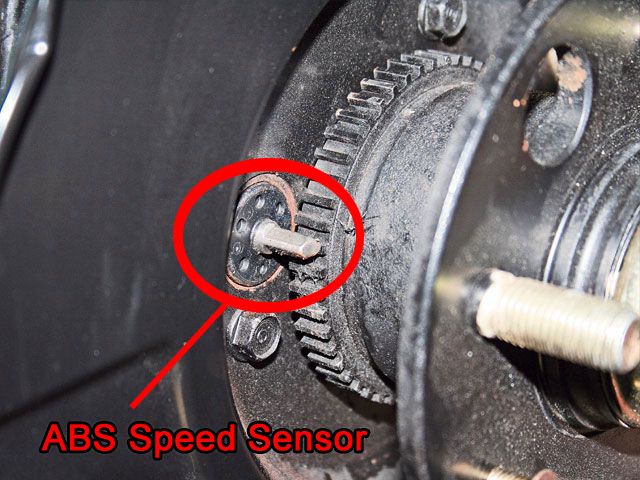
3. **Soft or Spongy Brake Pedal**
When you press down on your brake pedal, you expect a certain level of resistance and a firm, responsive feel. If, instead, your brake pedal feels soft or spongy – almost like stepping on soft fruit – where the pedal goes down easier than usual, sometimes even all the way to the floor, this is a clear indication of a significant problem within your brake system. This sensation suggests a compromise in the hydraulic integrity of your vehicle’s stopping power.
This soft or spongy feeling usually signals an issue within your brake system’s hydraulic components. These parts are interconnected, working in unison to transfer the force from your foot on the brake pedal to the brakes on the wheels. When air enters the brake lines or if there’s an insufficient amount of brake fluid, the hydraulic pressure necessary for effective braking cannot be properly generated, leading to the characteristic soft pedal feel.
One common cause for a spongy pedal is the presence of air or moisture within the brake fluid or lines. Air is compressible, unlike brake fluid, so if air bubbles are present, your foot pressure compresses the air before it can effectively transmit force to the calipers, resulting in a delayed or reduced braking response. This problem can also be attributed to issues with the master cylinder, which is the heart of your car’s hydraulic braking system.
Beyond fluid-related issues, certain component failures can also manifest as a soft brake pedal. A faulty master cylinder or a malfunctioning proportioning valve can prevent adequate pressure from building within the system. Similarly, a bad brake caliper or wheel cylinder can lead to incorrect pressure application, contributing to the spongy sensation. If your pedal has resistance but feels soft and squishy, your braking system has a serious problem, and it is likely not safe for use until the system is restored to its original condition.
Read more about: 13 Essential Red Flags: Your Step-by-Step Guide to Inspecting a Used Performance Car Like a Pro

4. **Hard Brake Pedal**
Just as a soft or spongy brake pedal is unsettling, a hard brake pedal can be equally alarming, as it requires significantly more effort to apply the brakes, often with frustratingly little stopping power. This condition takes much more force to depress the brake pedal and can be particularly frightening, as it doesn’t inspire confidence or provide the immediate stopping capability that is crucial for safe driving.
Most modern vehicles are equipped with a power-assisted brake system, which typically includes a power brake booster or a hydro-boosted system. This sophisticated component is designed to amplify your effort on the pedal, meaning you don’t have to exert the full physical force required to activate the brakes. The booster effectively reduces the physical exertion needed to bring your car to a stop, making braking easier and more efficient.
If your car suddenly develops a hard brake pedal, it is often a strong indicator that there is a lack of boost from the brake booster. When the power assistance system loses its functionality, the brake pedal will feel exceptionally stiff, making it considerably more difficult to apply the brakes with the familiar ease you’re accustomed to. This loss of assistance can make stopping the car feel like a strenuous and uncertain task.
Various issues can lead to a faulty brake booster. A vacuum leak, for instance, can prevent the booster from generating the necessary assist. A faulty check valve, which regulates vacuum flow to the booster, can also be a culprit. In some cases, the problem might lie with the brake booster itself, due to internal failure or seizing. There are multiple components in the power-assistance system, including the power booster, vacuum hoses, check valves, and the brake calipers, all of which must function correctly for proper operation.
Additionally, worn brake pads or a seized brake caliper, which prevents the brake system from working correctly, can contribute to a sensation of a hard pedal by creating excessive resistance in the system. As with soft brakes, addressing a hard brake pedal requires a methodical approach to pinpoint the exact component causing the problem, and it is vital to have it remedied before continuing to drive.
Read more about: Design Disasters Unveiled: 10 Tesla Cybertruck Flaws So Glaring, Owners Can’t Hide Them From Anyone

5. **Vehicle Pulls to One Side When Braking**
When your car is operating with a fully functional brake system, applying the brakes should result in a smooth, even deceleration. The braking force is distributed equally to both sides of the vehicle, ensuring a straight and controlled stop. However, if your vehicle consistently pulls to the left or right when you press the brake pedal, it’s a significant indicator that something is amiss and unbalanced within your brake system, as explained by Michael Herring, NuBrakes Dallas Lead Technician.
A common cause for this alarming symptom is a stuck brake caliper. The caliper’s crucial role is to squeeze the brake pads against the rotors, generating the friction needed to slow your car down. If one caliper becomes seized or is not functioning as effectively as the others, it will apply uneven braking force. This imbalance causes the car to veer towards the side where the braking force is stronger, or away from the side where it is weaker, resulting in the vehicle pulling to one side when braking.
Uneven brake pad wear can also be a primary contributor to this problem. If the brake pads on one side of the vehicle are significantly more worn down than those on the other side, they will create disparate amounts of friction. This difference in stopping power between the wheels will cause the car to pull towards the side with the more effective braking, making it challenging to maintain a straight line during deceleration.
It is important to note that while brake system components are frequently the cause, “that’s not always the case. Sometimes, the issue could be a problematic tire, a misaligned wheel, or worn-out suspension parts,” Herring adds. These non-brake related issues can mimic brake pulling symptoms, highlighting the importance of a comprehensive inspection. This situation should not be overlooked; if you encounter your car deflecting sideways while braking, you should take it for repair promptly.
Ignoring this issue can compromise your control, especially in high-speed braking situations or when navigating corners. The unbalanced braking force can make the vehicle prone to rolling or skidding, significantly increasing the risk of an accident. Therefore, prompt professional diagnosis and repair are essential to restore balanced braking and ensure your continued safety.
Read more about: 15 Simple Hacks: Your Ultimate Guide to Freeing a Truck from Deep Mud and Snow

6. **Brake Warning Lights Illuminated**
The dashboard of your vehicle is a vital communication hub, providing critical information about your car’s operational status. When your brake warning light illuminates, it’s your car’s explicit way of saying, “Hey, something’s not quite right with the brakes!” This visual alert is a non-negotiable signal that demands your immediate attention, indicating a potential issue that could affect your vehicle’s primary safety system.
The most frequent reason for a brake warning light to appear is low brake fluid. As Haley explains, “The brake fluid is the lifeblood of your braking system, helping to transfer the force from your foot on the pedal to the brakes on your wheels. Low brake fluid can affect your braking performance, and it’s usually a sign of a leak somewhere in the system.” This light serves as a critical indicator, flashing when brake fluid levels drop below a safe threshold, necessitating an immediate check and potential fluid top-off or leak repair.
Another significant reason for the illumination of a brake warning light is a problem with the anti-lock braking system (ABS). The ABS is a crucial safety feature designed to help you maintain control of your car and prevent skidding during heavy or emergency braking. If there’s an issue with this complex system, your dedicated ABS light will typically come on, signaling that this advanced safety mechanism may not function as intended when you need it most.
It is also essential to distinguish between a warning of a genuine brake system fault and a reminder that your parking brake is engaged. “Now, if your handbrake (or parking brake) is engaged, you’ll also see a light on your dashboard. So always double-check to make sure it’s fully released,” Haley reminds us. If this light appears, engage and disengage your parking brake; if the indicator disappears, there’s no issue. If it persists, however, professional inspection is warranted.
Regardless of the specific brake light that activates—be it the general brake indicator, the brake pad indicator signaling worn pads, or the ABS light—these dashboard alerts are designed to warn the driver of any underlying problem. Consulting your vehicle’s owner’s manual can provide specific interpretations for these and other indicators, but the overarching message is clear: when a brake light comes on, your safety system requires prompt investigation.
Read more about: Design Disasters Unveiled: 10 Tesla Cybertruck Flaws So Glaring, Owners Can’t Hide Them From Anyone
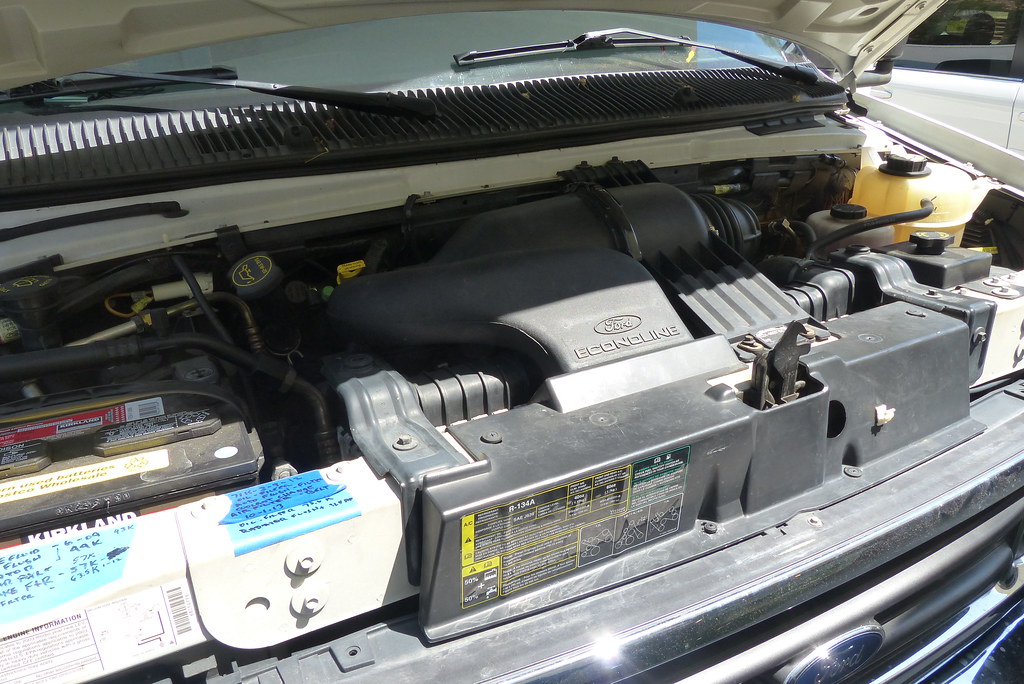
7. **Reduced Stopping Power**
Experiencing reduced stopping power in your vehicle can be compared to the sensation of running in water; it demands significantly more effort and distance to achieve the same result. If you begin to notice that you require more distance than usual to bring your car to a complete stop, or if the brakes simply don’t feel as effective as they once did, it’s a critical sign that your braking system is compromised. This diminished performance puts you and others at substantial risk while driving, making prompt action imperative.
Several factors typically contribute to a reduction in stopping power. One of the most common culprits is worn brake pads. The friction material on the brake pads is designed to wear away over time with use. As this material thins, it becomes progressively less effective at creating the necessary friction to slow your car down. Critically worn pads lead to poor braking performance, meaning the car will stop slower and less efficiently, sometimes feeling as though the brake simply “does not work well anymore.”
Another significant cause is brake fade. This phenomenon occurs when your brakes become excessively hot, leading to a temporary but dangerous loss of effectiveness. Brake fade is more prevalent in situations involving prolonged or heavy braking, such as driving down a steep, winding hill or when towing heavy loads. The extreme heat reduces the friction coefficient of the pads and rotors, making the brakes feel less responsive and requiring greater pedal effort to achieve deceleration.
Brake fluid issues also play a crucial role in maintaining optimal stopping power. If your brake fluid is old and has absorbed too much water, or if its level is low due to a leak somewhere in the system, the hydraulic pressure within your brake system can be significantly reduced. This compromised hydraulic pressure directly impacts the brakes’ ability to exert sufficient force on the wheels, thereby affecting your overall stopping power. In such cases, the system may experience a soft or spongy pedal feel, further compounding the issue.
When any of these signs of reduced stopping power become apparent, it is best to consult an expert mechanic immediately to determine the root cause of the problem. Delaying inspection and repair puts your safety, and potentially the safety of others, in jeopardy. A properly functioning braking system is non-negotiable for safe driving, making timely maintenance not just a recommendation, but a necessity.
Having covered the immediate signs that signal brake trouble, we now delve into the underlying causes and more advanced failures that can compromise your vehicle’s stopping power. Understanding these deeper issues is crucial for comprehensive maintenance and ensuring the long-term reliability of your braking system.
Read more about: Beyond the Conventional: A Deep Dive into Revolutionary Wheel Innovations and Future Mobility Solutions
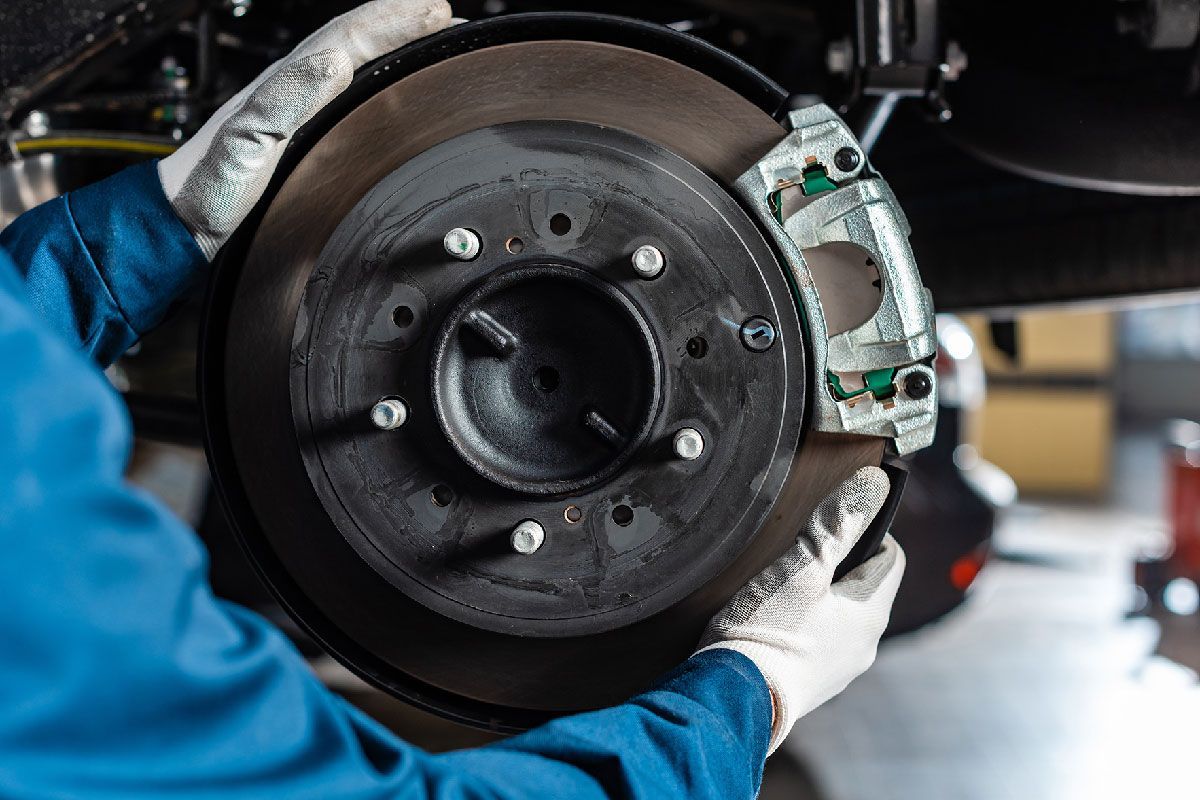
8. **Brake Overheating or Fade and Burning Smell**
Brake overheating is a critical issue that occurs when the friction generated during braking produces more heat than the system can effectively dissipate. As Michael Herring, NuBrakes Dallas Lead Technician, explains, “Brake overheating is like running a marathon without taking a break; your body (or in this case, your brakes) can’t cool down, and performance starts to decline.” This sustained heat can lead to what is known as brake fade, a dangerous condition where your car’s braking ability suddenly decreases, demanding increased pedal effort for less effective deceleration.
The normal function of brakes involves converting kinetic energy into thermal energy through friction, and this heat is usually dispersed into the air. However, situations involving heavy or prolonged braking, such as driving down steep hills or towing heavy loads, can overwhelm the system’s cooling capacity. When the brakes get too hot, the friction coefficient of the pads and rotors is reduced, making the brakes feel less responsive and requiring you to press the brake pedal harder and longer.
A distinct, sharp burning smell often accompanies brake overheating, serving as a clear warning sign. If you notice smoke emanating from the wheels, it can be an even more severe indicator, potentially pointing to a caliper that is jammed and not disengaging properly. In such instances, it is imperative to stop your vehicle in a safe location, allow the brakes to cool, and ensure the parking brake is fully disengaged to prevent further damage.
The consequences of repeated or severe brake overheating extend beyond temporary fade. Excessive heat can cause the brake fluid to boil, introducing gas bubbles into the hydraulic system and leading to a soft or spongy brake pedal. Moreover, extreme temperatures can warp your brake rotors, manifesting as a pulsating brake pedal or a shake in the steering wheel when braking. As Herring cautions, “continually overheating your brakes can reduce their lifespan,” leading to premature wear of pads and rotors.
Read more about: Your Car’s Warning Whispers: 14 Critical Brake Failure Signs Every Driver Needs to Know for Road Safety

9. **Brake Fluid Leaks**
Brake fluid serves as the incompressible medium that transmits the force from your brake pedal to the calipers, making it the lifeblood of your hydraulic braking system. Normally, this fluid is clear to yellowish and has an oily texture. A leak in this vital system can pose significant safety risks by compromising the hydraulic integrity necessary for effective braking.
Brake fluid leaks typically originate from deteriorating seals within key components such as the master cylinder, brake calipers, or wheel cylinders. A common and easily identifiable sign of a leak is a puddle of fluid under your vehicle, usually found near the wheels or directly beneath the brake pedal assembly. Regular checks for fluid levels and visible leaks are crucial.
When brake fluid leaks, the volume of fluid in the system decreases, which in turn reduces the hydraulic pressure that can be generated. This lack of sufficient pressure means there isn’t enough force to properly push the brake pads against the rotors. A direct symptom of this compromise is a soft or spongy brake pedal, where the pedal goes down easier than usual, sometimes even to the floor, as air may also enter the lines.
If you observe that your brake fluid level drops regularly, it is a definitive sign of a leak somewhere in the system, potentially within the brake lines themselves. Identifying and addressing such a leak immediately is critical. Repairs may involve replacing compromised gaskets or tightening connections, but if a component like a brake caliper or a brake hose is leaking, it will likely require rebuilding or complete replacement to restore the system’s integrity.
Read more about: Understanding the Environmental Impact of Your Old Car: A Comprehensive Guide to Responsible Disposal and Sustainable Solutions for Consumers

10. **Worn Out Brake Pads**
Brake pads are fundamental components of your car’s disc braking system, designed to create friction against the rotors to slow and stop the vehicle. Over time, the friction material on these pads inevitably wears away due to constant use. As this material thins, the brake pads become progressively less effective at generating the necessary friction, leading to reduced braking efficiency.
Early indicators of severely worn pads often come in the form of specific sounds. A high-pitched squealing or screeching noise when you apply the brakes is typically caused by a small metal wear indicator designed into the pad. This component makes contact with the rotor when the pad material reaches a critical minimum thickness, serving as an audible alert that replacement is imminent. Ignoring this warning can lead to more serious problems.
In extreme cases, if the brake pads are allowed to wear down completely, the friction material will be entirely absent, resulting in the metal backing plate of the pad rubbing directly against the metal brake rotor. This “metal-on-metal” contact produces a loud, harsh grinding noise. This condition not only severely diminishes braking performance but also causes significant damage to both the rotors and the pads, transforming a routine pad replacement into a more extensive and costly repair.
To assess the wear, you can often visually inspect your brake pads through the wheel spokes. If the pad material is thinner than a quarter inch (approximately 6.35 mm), it is no longer considered safe and should be replaced. Michael Herring notes that “Replacing worn out brake pads is a routine part of vehicle maintenance. The frequency of replacement depends on various factors, including your driving habits, the type of pads installed, and the driving conditions.” Adhering to regular maintenance schedules for pad replacement is essential for maintaining optimal stopping power and preventing damage to other braking components.
Read more about: 15 Things Mechanics Really Wish You’d Stop Delaying on Your Car
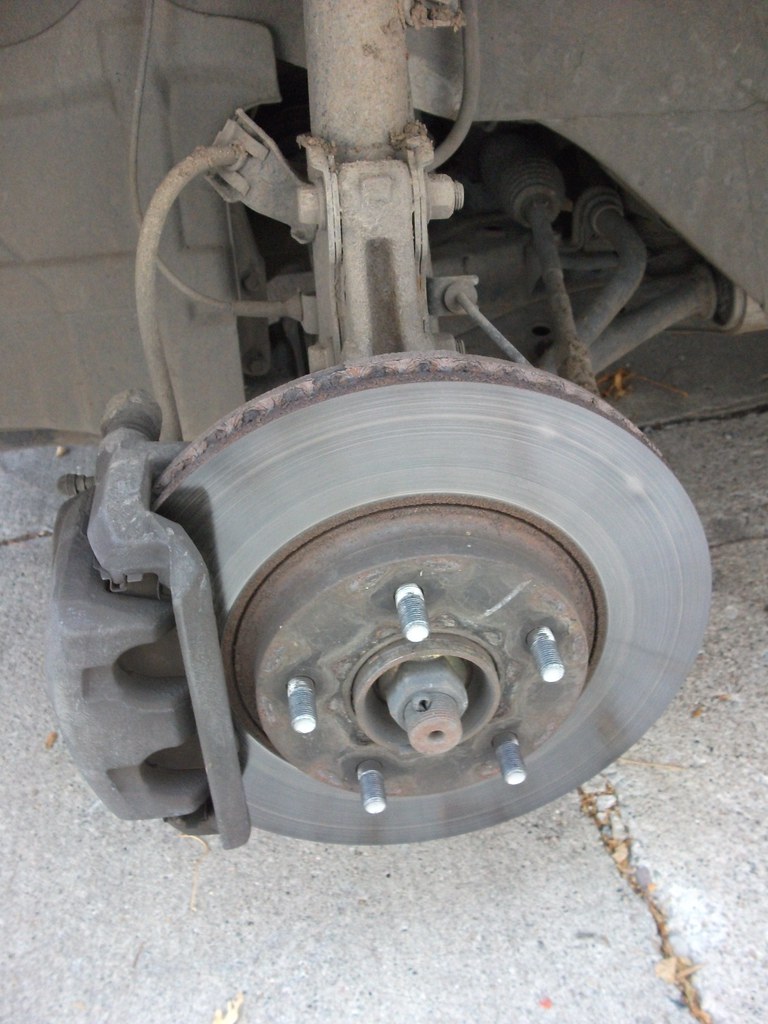
11. **Warped Rotors and Vibrating Brakes**
Brake rotors are the smooth, flat metal discs that the brake pads clamp onto, initiating the friction required to slow and stop your vehicle. Their integrity is paramount for even contact with the pads and consistent braking performance. However, with constant use and thermal stress, these rotors can become warped or deformed, leading to noticeable problems.
The primary cause of warped rotors is excessive heat. This often occurs during heavy brake use, such as prolonged braking on steep downhill grades or when towing heavy loads, where the rotors get excessively hot and then cool unevenly. Another less common, but significant, contributor to rotor warpage is uneven lug nut torque during wheel installation, which can put uneven stress on the rotor surface.
A tell-tale symptom of warped rotors is a pulsing or vibrating sensation that can be felt through the brake pedal or even the steering wheel when the brakes are applied. This occurs because the warped, uneven surface of the rotor prevents the brake pads from making continuous, even contact. Instead, the pads intermittently grab and release the uneven surface, creating the characteristic vibration. As Herring points out, “Warped rotors can reduce your car’s braking efficiency and lead to premature brake pad wear.”
It is important to distinguish between minor material buildup on the rotor surface and actual warpage; the former can sometimes be remedied by a few hard applications of the brakes from higher speeds. However, if the warpage is significant, the rotors may need to be machined by a professional to restore a flat surface, or in severe cases, completely replaced. Regular inspection for warpage and cracks due to overheating is crucial, as compromised rotors directly impact braking effectiveness and safety.
Read more about: Your Car’s Warning Whispers: 14 Critical Brake Failure Signs Every Driver Needs to Know for Road Safety

12. **Damaged Brake Lines**
Brake lines are a network of slim, flexible tubes that form the conduits for brake fluid, transporting hydraulic pressure from the master cylinder to the wheel cylinders and calipers. This crucial pathway enables the entire braking system to function effectively. Any compromise to these lines can have severe repercussions for your vehicle’s stopping capability.
These critical lines are susceptible to damage from various factors including general wear and tear, physical impacts from road debris, and corrosive elements like road salt or moisture. Such damage can lead to a breach in the line, causing brake fluid to leak out. When fluid escapes, the hydraulic pressure within the system drops, significantly reducing the efficiency of the brakes.
The consequences of damaged brake lines are severe, ranging from diminished braking performance to outright brake failure in the worst-case scenario. Common signs that indicate damaged brake lines include a soft or spongy brake pedal, where the pedal offers little resistance and sinks easily. Drivers will also experience noticeably reduced braking performance, requiring greater distance and effort to bring the vehicle to a stop.
Perhaps the most definitive sign of damaged brake lines is the visible presence of brake fluid leaks under the car. If you notice fluid pooling or streaks along the underside of your vehicle, particularly along the path of the brake lines, immediate inspection is warranted. Given the critical role of brake lines, any detected damage necessitates prompt professional repair and, typically, a complete system bleed and fluid replacement to ensure that hydraulic pressure is restored and maintained.
Read more about: Buyers Beware: 14 Car Mods That Are a Total Waste of Money and Could Land You in Trouble
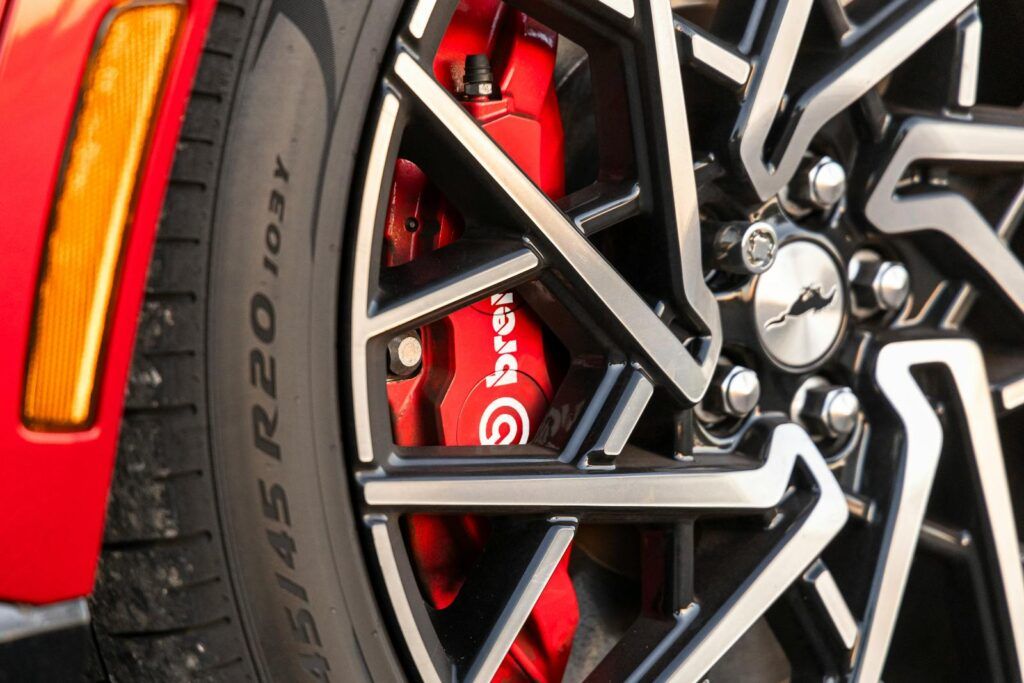
13. **Caliper Issues and Brakes Failing to Disengage**
Brake calipers are the clamping mechanisms that house the brake pads and press them against the rotors, creating the necessary friction to slow your vehicle. A major and dangerous issue is a seized caliper, which occurs when internal components, usually pistons, can no longer slide freely. This seizing is typically caused by rust, dirt, or debris accumulation, preventing the caliper from operating as intended.
When a caliper seizes, it can remain engaged or partially engaged, causing the brake pads to constantly rub against the rotor even when the brake pedal is not pressed. This continuous friction leads to excessive and uneven brake pad wear, drastically shortening their lifespan. Furthermore, the constant rubbing generates significant heat, which can quickly overheat and warp the brake rotor, leading to the vibrations and reduced efficiency discussed previously.
Another common caliper problem involves leaks, often stemming from the deterioration of seals and rubber boots designed to contain the brake fluid. Over time, these protective components can wear out, allowing brake fluid to escape. A leak in a caliper compromises the hydraulic pressure to that wheel, resulting in reduced braking power and potentially a pulling sensation in the steering.
The inability of brakes to fully disengage is a serious concern, often directly linked to caliper issues. Besides internal caliper seizing, a corroded or seized parking brake cable can prevent the caliper from releasing pressure on the brake disc. Extensive corrosion throughout the brake system, including the master cylinder and brake lines, can also lead to blockages or seized parts that prevent the calipers from releasing pressure, making the car feel underpowered as if the brakes are constantly applied. Addressing these issues by rebuilding or replacing seized calipers, fixing leaks, and managing corrosion is vital for restoring proper brake function and ensuring driving safety.
Read more about: 13 Essential Lifehacker Strategies to Maximize Your Highway Fuel Economy and Save Serious Cash
As we’ve explored the intricate workings and potential pitfalls of your car’s braking system, one truth becomes abundantly clear: proactive maintenance is not merely a recommendation, but a cornerstone of safe and reliable driving. As Patrick Haley, NuBrakes Operations Manager, emphasizes, “Brakes in good condition can be the difference between a close call and an unfortunate incident.” Regular check-ups allow you to address minor issues like worn pads before they escalate into costly repairs involving rotors or calipers. Beyond the financial savings, consistent brake maintenance provides invaluable peace of mind, ensuring you can confidently rely on your vehicle to protect you and your passengers on every journey. Ultimately, a well-maintained braking system is your steadfast partner on the road, ready to respond precisely when it matters most.



